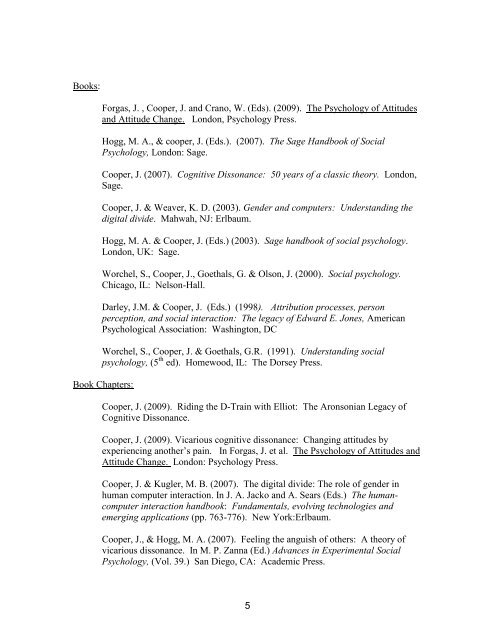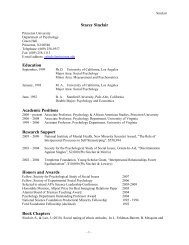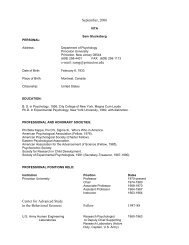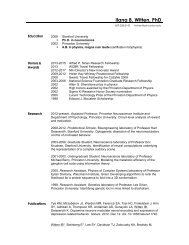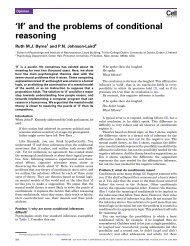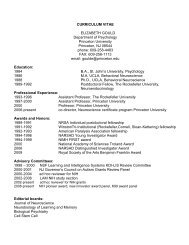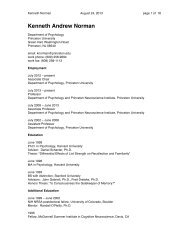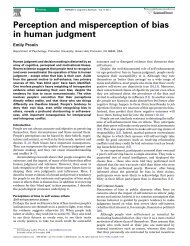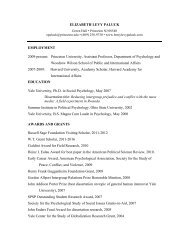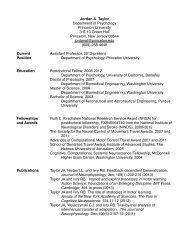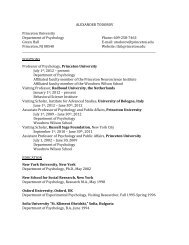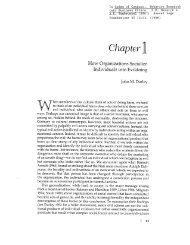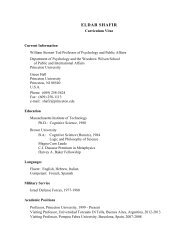VITA Joel Cooper - Princeton University - Department of Psychology
VITA Joel Cooper - Princeton University - Department of Psychology
VITA Joel Cooper - Princeton University - Department of Psychology
You also want an ePaper? Increase the reach of your titles
YUMPU automatically turns print PDFs into web optimized ePapers that Google loves.
Books:Forgas, J. , <strong>Cooper</strong>, J. and Crano, W. (Eds). (2009). The <strong>Psychology</strong> <strong>of</strong> Attitudesand Attitude Change. London, <strong>Psychology</strong> Press.Hogg, M. A., & cooper, J. (Eds.). (2007). The Sage Handbook <strong>of</strong> Social<strong>Psychology</strong>, London: Sage.<strong>Cooper</strong>, J. (2007). Cognitive Dissonance: 50 years <strong>of</strong> a classic theory. London,Sage.<strong>Cooper</strong>, J. & Weaver, K. D. (2003). Gender and computers: Understanding thedigital divide. Mahwah, NJ: Erlbaum.Hogg, M. A. & <strong>Cooper</strong>, J. (Eds.) (2003). Sage handbook <strong>of</strong> social psychology.London, UK: Sage.Worchel, S., <strong>Cooper</strong>, J., Goethals, G. & Olson, J. (2000). Social psychology.Chicago, IL: Nelson-Hall.Darley, J.M. & <strong>Cooper</strong>, J. (Eds.) (1998). Attribution processes, personperception, and social interaction: The legacy <strong>of</strong> Edward E. Jones, AmericanPsychological Association: Washington, DCWorchel, S., <strong>Cooper</strong>, J. & Goethals, G.R. (1991). Understanding socialpsychology, (5 th ed). Homewood, IL: The Dorsey Press.Book Chapters:<strong>Cooper</strong>, J. (2009). Riding the D-Train with Elliot: The Aronsonian Legacy <strong>of</strong>Cognitive Dissonance.<strong>Cooper</strong>, J. (2009). Vicarious cognitive dissonance: Changing attitudes byexperiencing another’s pain. In Forgas, J. et al. The <strong>Psychology</strong> <strong>of</strong> Attitudes andAttitude Change. London: <strong>Psychology</strong> Press.<strong>Cooper</strong>, J. & Kugler, M. B. (2007). The digital divide: The role <strong>of</strong> gender inhuman computer interaction. In J. A. Jacko and A. Sears (Eds.) The humancomputerinteraction handbook: Fundamentals, evolving technologies andemerging applications (pp. 763-776). New York:Erlbaum.<strong>Cooper</strong>, J., & Hogg, M. A. (2007). Feeling the anguish <strong>of</strong> others: A theory <strong>of</strong>vicarious dissonance. In M. P. Zanna (Ed.) Advances in Experimental Social<strong>Psychology</strong>, (Vol. 39.) San Diego, CA: Academic Press.5


